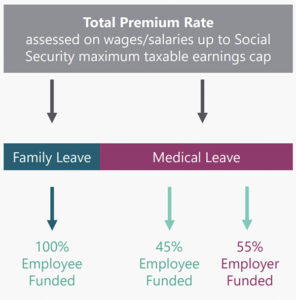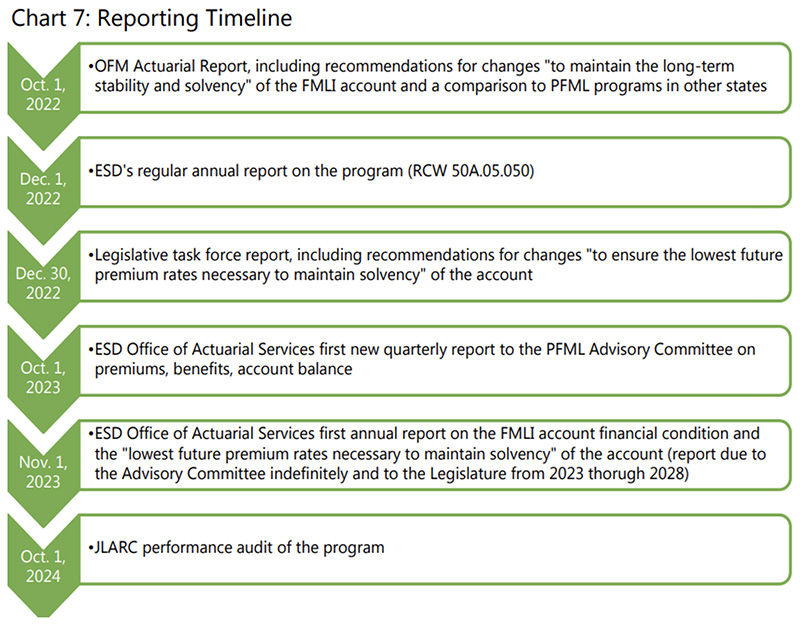During the 2022 legislative session, the Employment Security Department (ESD) alerted the Legislature that Washington’s PFML program was projected to go insolvent before the end of the biennium. In response, the Legislature appropriated $350 million to prevent program insolvency, with a caveat that the funds could only be used to pay benefits in the event of a deficit. Additionally, the Legislature authorized several actuarial and task force reviews of the program intended to inform the Legislature on reforms necessary to maintain PFML solvency.
Recent ESD data shows that the PFML program was, indeed, in a deficit for half of July, and projections now indicate the program will again be in a deficit in September and October.
 ESD is also forecasting that premium rates, which were 0.4% of taxable wages in 2021, will need to increase to 0.9%-1.0% to maintain PFML solvency into the near future. Premiums had already increased from 0.4% to 0.6% at the beginning of 2022. Accordingly, if ESD’s projected premiums are implemented, the premium rates will increase by about 150% between 2021 and 2023.
ESD is also forecasting that premium rates, which were 0.4% of taxable wages in 2021, will need to increase to 0.9%-1.0% to maintain PFML solvency into the near future. Premiums had already increased from 0.4% to 0.6% at the beginning of 2022. Accordingly, if ESD’s projected premiums are implemented, the premium rates will increase by about 150% between 2021 and 2023.
PFML premiums are shared between employers and employees. Employers pay 55% of medical leave premiums. Employees pay 100% of family leave premiums and 45% of medical leave premiums.
When the PFML program was initiated in 2019, the initial split was one-third of the total premium for family leave and two-thirds for medical leave. Beginning in 2022, the statute requires the premium to be divided based on actual usage data. For 2022, the usage split is now 51% family leave and 49% medical leave.
Based on the actual usage data, employees will bear most of the projected increase in premium rates.
ESD reports that benefit payments have exceeded premium collections in nearly every quarter. Moreover, benefit levels also exceeded the baseline projections for the program when it was adopted. According to ESD, both the number of claims and average benefit level per claim have exceeded earlier estimates.
 The net effect is that the balance is the PFML trust fund has been declining since May 2020 and has dipped into short-term deficits several times during 2022.
The net effect is that the balance is the PFML trust fund has been declining since May 2020 and has dipped into short-term deficits several times during 2022.
Exacerbating the problem is that PFML benefits are tied to Washington’s average annual wage, which has jumped significantly in the past two years. Prior to the pandemic, Washington’s average wage increased by about 3.4% per year. However, the average wage has increased by 7.0% in recent years.
What’s Next
During the 2022 session, the Legislature established several task forces and studies to inform the Legislature on reforms and policy options to maintain program solvency and retain PFML benefits. The following timeline shows when these various efforts are scheduled to report their findings.
WR will continue to monitor and engage in this important issue as it develops further.





